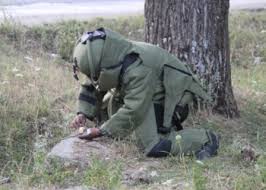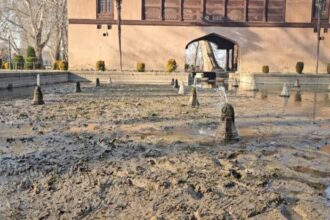Rainfall Deficit
Jammu and Kashmir (J&K) is grappling with a severe water crisis as it experiences a historic 79% deficit in rainfall across the Union Territory. This dramatic shortfall, impacting every district in J&K, raises alarm bells about the potential devastation to the region’s agriculture, economy and environment. With the Meteorological (MeT) Department forecasting no significant precipitation until at least February 18, the situation is expected to deteriorate further, demanding immediate and sustained action from authorities and the public alike. The crisis underscores the growing vulnerability of the Himalayan region to climate change and its far-reaching implications for the livelihoods of its inhabitants. Kashmir’s 80% rainfall deficit is already causing water scarcity, crop loss and ecological damage.
Data reveals a stark disparity in rainfall distribution, with some areas experiencing near-total dryness. Kathua district is enduring the worst conditions, with a precipitous 97% drop in rainfall from January 1 to February 12, 2025, compared to normal levels. This near-absence of rain and snow is unprecedented in recent history. The situation in other districts is equally concerning. Jammu has recorded a deficit rainfall of 94%, while Udhampur and Samba districts have a deficiency of 92% each. Srinagar, the summer capital, has recorded a deficit rainfall of 82% during the period. Seven other places, including Shopian, Reasi, Ramban, Kulgam, Doda, Budgam and Anantnag, have recorded a deficiency of between 80 to 89 percent. Pulwama, Kupwara, Bandipora and Baramulla districts have a deficiency of between 70 and 79 percent during the period. Four districts, including Poonch, Rajouri, Kishtwar and Ganderbal, have recorded 60 to 69 percent deficiency. The comprehensive categorization of all districts under ‘Large Deficiency’ highlights the widespread and critical nature of this unfolding crisis, necessitating urgent and coordinated intervention.
Dry Conditions Persist
The Meteorological Department’s forecast offers little respite in the immediate future, further compounding the crisis. The region heavily relies on winter snowfall and rainfall to replenish its water resources, sustaining agriculture, drinking water supplies, and hydroelectric power generation throughout the year. Director of the Meteorological Department, Dr. Mukhtar Ahmad, has indicated that dry conditions are expected to persist through February 15. A slight change is anticipated on February 16, with partly to generally cloudy weather and the possibility of light rain or snow in isolated higher reaches of north and central Kashmir, particularly during the evening and night. However, the potential impact of this limited precipitation remains uncertain. The forecast for February 17-18 remains largely unchanged, with partly to generally cloudy skies and a slight chance of brief, light rain or snow in isolated higher areas. Beyond that, there is a possibility of light rain and snow at scattered places during the night of February 19 and the late night to afternoon of February 20. Looking further ahead, partly cloudy skies are expected with a slim chance of isolated light rain or snow on February 21-22. Emphasizing the severity of the situation, Dr. Ahmad has stated that “nothing significant is expected until February 18,” confirming that the dry spell is likely to continue, further exacerbating the existing water scarcity and raising the specter of a prolonged drought.
The persistent dry spell and the monumental rainfall deficit pose a grave threat to various sectors and could trigger a cascade of adverse consequences for the region. The agricultural sector, the backbone of J&K’s economy and the primary source of livelihood for a significant portion of the population, is particularly vulnerable. Insufficient rainfall can severely hamper crop yields, leading to substantial economic losses for farmers and potentially creating widespread food shortages and price inflation. Crops such as rice, maize, saffron and apple orchards, which thrive on moderate to heavy rainfall, have already been impacted. High-value crops such as saffron, known as the ‘Red Gold’ of Kashmir and heavily reliant on winter precipitation, are especially at risk, potentially devastating the livelihoods of saffron farmers and impacting the region’s cultural heritage. The Jhelum River – vital for irrigation and drinking water in Kashmir – has been running at historically low levels, further stressing the local water management systems. The dwindling water levels in rivers, lakes and reservoirs due to reduced snowfall and rainfall will have far-reaching consequences, affecting irrigation systems essential for agriculture, threatening the availability of drinking water supplies for both urban and rural populations and potentially disrupting hydroelectric power generation, leading to power shortages and economic instability. Winter tourism, a vital source of revenue for the region, could also suffer significantly due to the lack of snowfall, impacting hotels, tour operators and other businesses that rely on winter tourism. Furthermore, the prolonged drought conditions can severely stress ecosystems, increasing the risk of forest fires, harming wildlife and impacting biodiversity, potentially causing long-term ecological damage.
Causes of the Rainfall Deficit
- Changing Climate Conditions: Experts suggest that the deficient rainfall is part of a broader pattern of changing climate conditions affecting the region and such anomalies could become more frequent due to global climate change.
- Decline in Western Disturbances: The overall trend of decreasing snowfall has been attributed to a decline in Western Disturbance events. Westerly disturbances play a crucial role in determining the amount and distribution of precipitation in Kashmir, particularly during the winter months.
- Unusual Weather Phenomena: The anomaly has been attributed to a combination of climatic shifts and unusual weather phenomena, which have caused lower-than-expected rainfall throughout the year.
- Prolonged Dry Weather: Jammu and Kashmir has been witnessing dry weather, posing a significant threat to the region’s biodiversity.
Recommendations and Mitigation Strategies
Addressing this unprecedented water crisis requires immediate and sustained action on multiple fronts. The J&K administration must prioritize conducting a comprehensive assessment of the impact of the rainfall deficit on various sectors, including agriculture, water resources, tourism and the environment, to fully understand the scope of the crisis and inform targeted interventions. Simultaneously, the administration should develop and implement a range of short-term and long-term mitigation strategies to minimize the adverse effects of the drought. According to a climatologist at the University of Kashmir, “This deficiency in rainfall is alarming, it not only affects agriculture but also has a ripple effect on water supply, hydroelectric power generation and the overall economy of the region.” These strategies should include:
- Promoting Water Conservation: Implementing measures to promote water conservation among households, businesses and agricultural users.
- Efficient Irrigation Systems: Highlighting water conservation and efficient irrigation systems as key areas for intervention.
- Drought-Resistant Farming Practices: Encouraging the adoption of drought-resistant farming practices, such as crop diversification and efficient irrigation techniques.
- Exploring Alternative Water Sources: Exploring alternative water sources, such as groundwater recharge and water recycling, to augment existing supplies.
- Public Awareness Campaigns: Launching public awareness campaigns to educate residents about the importance of water conservation and responsible water usage is crucial in fostering a culture of water stewardship.
- Long-Term Investments: In the long term, investing in sustainable water management solutions, such as rainwater harvesting systems, watershed management projects and improved irrigation infrastructure, is essential for building resilience against future droughts and ensuring the long-term water security of the region.
The coming weeks and months will be critical in determining the long-term consequences of this extreme rainfall deficit. A concerted and collaborative effort is needed from government agencies, local communities and individual citizens to address the challenges posed by this unprecedented water crisis and safeguard the future of Jammu and Kashmir. Furthermore, this event serves as a stark reminder of the increasing vulnerability of the Himalayan region to climate change and the urgent need for global action to reduce greenhouse gas emissions and mitigate the impacts of climate change on vulnerable communities around the world.







